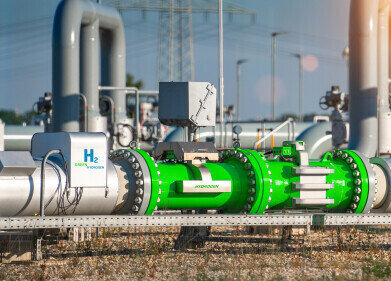Biofuel industry news
What is a Lubricant?
Feb 10 2022
From heavy-duty machinery used in oil and gas refineries to commuter bicycles, lubricants are used for a wide range of applications. The substances work to reduce friction between metal surfaces and keep machines running efficiently. Without lubricants, performance is compromised, and the risk of mechanical failure drastically increases.
Read on to find out more about lubricants, how they work and the critical role they play in maintaining machines of all sizes.
How do lubricants work?
While different types of lubricants are used for different applications, most perform the same function of creating a film between moving surfaces. This protective barrier is often virtually invisible to the naked eye but eliminates direct metal-to-metal contact to achieve the following goals:
-
Minimise friction
The primary function of lubricants is to reduce friction between moving parts. By introducing lubricants into a mechanical system, operators can minimise friction and maximise performance. For example, lubricants are used to reduce friction in diesel engines used to power pumps and compressors at oil and gas pumping stations. Keeping the diesel engines well lubricated helps to maintain operational efficiency, reduce unplanned downtime and ultimately, drive profits.
-
Reduce wear
By reducing friction between moving parts, lubricants minimise wear and prevent the deterioration of parts caused by metal-on-metal contact. As well as breaking down parts and components, wear caused by friction can release metallic contaminants into a mechanical system which can create serious operational issues.
-
Reduce operating temperature
Excessive friction between moving parts can cause operating temperatures to soar. This affects performance and can also increase the risk of mechanical failure or fire. Reducing the operational temperatures of hydraulic systems used to power drill stems at exploration sites in the USA is just one of many ways lubricants are used in the oil and gas sector.
-
Repel contaminants
One of the main goals of lubricants is to repel contaminants. For example, bicycle chain lubricant is designed to actively repel water, which can fast-track corrosion. Lubricants can also be an effective way to prevent build-ups of dirt, dust and other contaminants. Ideally, a good lubricant should be effective in both wet and dry conditions.
Increasing the longevity of assets
By minimising friction and wear, reducing operating temperatures and repelling contaminants, lubricants can significantly increase the longevity of assets. Whether it’s an expensive mountain bike drivetrain or an offshore oil and gas drilling rig, lubricants help to maximise equipment output and extend the life of critical assets.
Find out more about lubricants, including the centuries-old origins of the friction-reducing substances, in ‘A Complete Guide to Lubricants - Types, Quality & Testing’.
Digital Edition
PIN 26.1 Feb/Mar 2025
March 2025
Analytical Instrumentation - Elemental Analysis for Quality and Process Control at Refineries, for Lubricants and Wear Metals in Engine Oils - Synthetic Lubricants: New Developments - Scaling...
View all digital editions
Events
Apr 08 2025 Birmingham, UK
Apr 08 2025 Kielce, Poland
Apr 08 2025 Ravenna, Italy
Apr 08 2025 Southampton, UK
Apr 08 2025 London, UK



















